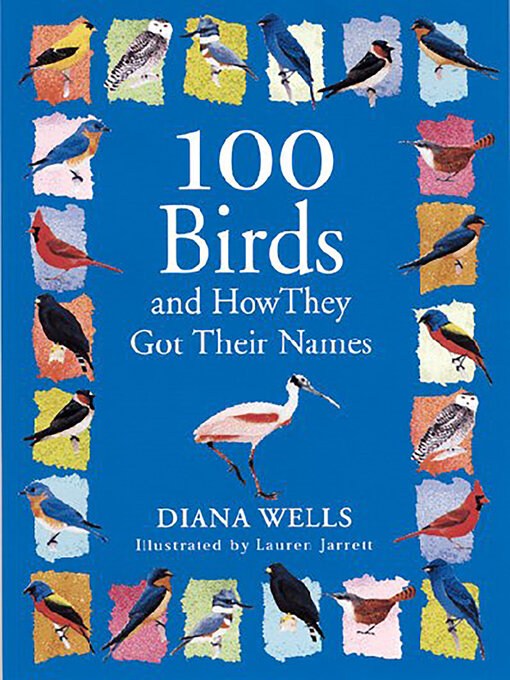- HPU Campus Histories
- Business
- Religion & Spirituality
- Self-Improvement
- History
- See all nonfiction collections
Birds and bird imagery are integral parts of our language and culture. With her remarkable ability to dig up curious and captivating facts, Diana Wells hatches a treat for active birders and armchair enthusiasts alike. Meet the intrepid adventurers and naturalists who risked their lives to describe and name new birds. Learn the mythical stories of the gods and goddess associated with bird names. Explore the avian emblems used by our greatest writers—from Coleridge's albatross in "The Ancient Mariner" to Poe's raven.
A sampling of the bird lore you'll find inside:
Benjamin Franklin didn't want the bald eagle on our National Seal because of its "bad moral character," (it steals from other birds); he lobbied for the turkey instead.
Chaffinches, whose Latin name means "unmarried," are called "bachelor birds" because they congregate in flocks of one gender.
Since mockingbirds mimic speech, some Native American tribes fed mockingbird hearts to their children, believing it helped them learn language.
A group of starlings is called a murmuration because they chatter so when they roost in the thousands.
Organized alphabetically, each of these bird tales is accompanied by a two-color line drawing. Dip into 100 Birds and you'll never look at a sparrow, an ostrich, or a wren in quite the same way.
-
Creators
-
Publisher
-
Release date
October 30, 2001 -
Formats
-
Kindle Book
-
OverDrive Read
- ISBN: 9781565126848
-
EPUB ebook
- ISBN: 9781565126848
- File size: 7692 KB
-
-
Accessibility
Publisher statement (EPUB)
The publisher provides the following statement about the accessibility of the EPUB file supplied to OverDrive. Experiences may vary across reading systems. After borrowing the book, you may download the EPUB files to read in another reading system.
Ways Of Reading
No information about appearance modifiability is available.
Not all of the content will be readable as read aloud speech or dynamic braille.
Conformance
No information is available.
-
Languages
- English
-
Reviews
-
Library Journal
December 1, 2001
In this little volume, Wells (100 Flowers and How They Got Their Names) offers 100 two- to three-page essays that provide brief but satisfactory descriptions of an individual bird or bird group (e.g., sparrows, owls, and hawks). Tidbits and trivia, as well as literary, folkloric, biblical, mythical, or other references, help explain why a bird is named as it is. Wells discusses the origin of the scientific name, clarifying the meaning of the original Latin terminology, and often recounts who selected the name and why or for whom the bird was named. Each of the alphabetically arranged entries includes a black-and-white sketch. There is a satisfying mix of common birds (e.g., cardinal, crow, and goose) and more exotic species (e.g., cassowary, bird of paradise, and hoatzin). Especially well timed with the recent publication of new field guides by David Sibley and Kenn Kaufman, this volume will make a likable, but not imperative, addition to public and academic libraries with ornithological collections. (Index not seen.) Nancy Moeckel, Miami Univ. Libs., Oxford, OHCopyright 2001 Library Journal, LLC Used with permission.
-
Loading
Why is availability limited?
×Availability can change throughout the month based on the library's budget. You can still place a hold on the title, and your hold will be automatically filled as soon as the title is available again.
The Kindle Book format for this title is not supported on:
×Read-along ebook
×The OverDrive Read format of this ebook has professional narration that plays while you read in your browser. Learn more here.

